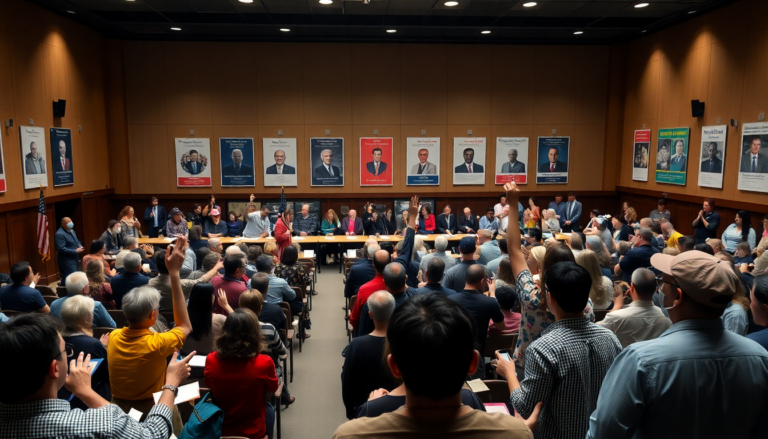Argomenti trattati
As California navigates the complexities of Governor Gavin Newsom’s congressional redistricting proposal, a significant clash is brewing within the state legislature. This contentious issue has mobilized a diverse crowd, with many citizens stepping up to voice their opinions during public hearings. What do these legislative debates reveal about the deep-seated tensions between conservative and liberal factions? Ultimately, they reflect the broader political climate of the state.
The Landscape of California’s Redistricting Debate
At the center of this dispute is the assembly’s decision to push forward Newsom’s controversial redistricting plan, which seeks to override the state’s independent redistricting commission. The goal? To create congressional districts that might favor Democratic candidates. This has sparked fierce backlash from conservative groups. The hearings, coinciding with a rally led by Pastor Jack Hibbs, attracted thousands of conservative voters, many of whom arrived with a singular mission: to oppose what they view as a partisan maneuver aimed at undermining their electoral influence.
Public testimony at these hearings has largely been dominated by conservative voices, who express frustration over what they see as a systematic effort to manipulate electoral boundaries. Judy Escobedo, a retired teacher from Visalia, captured the sentiments of many attendees when she stated, “We voted for that because we want to choose our politicians. We don’t want our politicians to choose their voters.” This assertion underscores a fundamental concern among conservatives about representation and electoral fairness in the state. So, how will the assembly respond to these concerns?
Opposition and Support: The Divided Responses
Despite the overwhelming opposition from conservatives, a handful of supporters, primarily from organized labor, have spoken in favor of the redistricting plan. They argue that it is a necessary response to the broader threats posed by the Trump administration’s influence on state politics. State Senator Sabrina Certantes emphasized this point during the hearings, framing the redistricting debate as a pivotal moment in defending democracy against an “existential threat.” But is this really about protecting democracy or something more?
However, the atmosphere at the hearings was charged, with many attendees expressing skepticism about their ability to influence the inevitable passage of the plan. David Bolog, a maintenance worker from Los Angeles, highlighted this resignation, noting, “I’m not changing these people’s minds… you still have to say no.” This sentiment reflects a growing frustration among conservative constituents who feel increasingly sidelined in a state that leans heavily liberal.
The Implications of Redistricting in California
The implications of this redistricting plan stretch far beyond immediate political ramifications. The proposed changes could drastically alter the representation landscape across California, potentially leading to Republicans losing a significant number of their congressional seats. This concern has prompted legal threats from California Republicans, heightening the urgency of the debate.
Moreover, the proposed map redraws crucial districts, such as the rural El Dorado County district, now aligned with more liberal suburbs. Local residents are left wondering whether their specific issues—like wildfire preparedness and insurance availability—will receive the attention they deserve in a predominantly liberal political landscape. Will their voices be heard, or will their concerns be drowned out?
As the legislative process unfolds, the timing of a potential special election on November 4 adds another layer of complexity. This election would allow voters to have the final say on the new congressional lines, but the ongoing political discourse suggests a widening divide between constituents and their elected officials.
Looking Ahead: The Future of California’s Political Landscape
As California stands at this critical juncture in its political journey, the outcomes of the redistricting hearings will resonate throughout the state. With Governor Newsom expected to launch a presidential campaign, the motivations behind the redistricting efforts are under intense scrutiny. Critics argue that this initiative is more about personal political ambitions than genuine representation. What does this mean for the future of political integrity in California?
Ultimately, the ongoing debate over redistricting in California mirrors larger national trends, where the manipulation of electoral boundaries is increasingly under the microscope. The voices that emerged during the public hearings represent a microcosm of the broader struggle for representation in a rapidly changing political landscape. As citizens continue to engage in this debate, the long-term implications of these decisions will echo for years to come, shaping the future of California’s governance and political representation.

